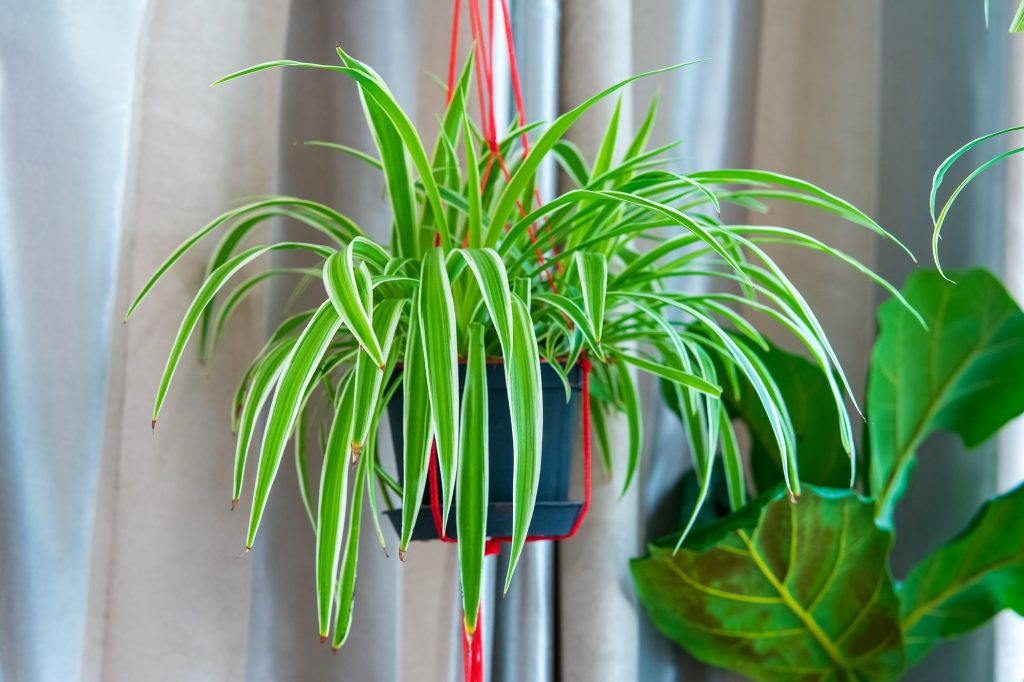Also referred to as the Ribbon plant, Spider Ivy, or Hen and chickens, the Spider plant has an alluring effect on any environment they are propagated in. The Southern African plant has become a popular option for house plant growers and interior décor enthusiasts due to its distinct foliage feature.
They can complement the theme of any home so far crucial aesthetic factors are considered.
This is one plant that should not be grown in drab containers. Their elegant appearance is enhanced when they are grown in attractive containers and are placed in conspicuous locations.
In case you have been on the look for a houseplant to propagate or the next to propagate, we have compiled a list of the most alluring Spider plant varieties to grow. In addition, we have included its profile that would get you acquainted with the plant alongside some care tips that would guide you.
Spider Plant Basic Information And Care Tips
This Spider plant profile would get you acquainted with the next houseplant you may be propagating soon.
| Botanical name | Chlorophytum comosum |
| Origin | Southern Africa |
| Light | Bright indirect light |
| Watering | Moderate watering |
| Temperature | 68°F-75°F |
| Toxicity | Non-Toxic to pets and humans |
| Propagation Style | Indoor and Outdoor propagation |
| Food | Liquid-Based Fertilizer |
| Humidity | Low humidity |
| Foliage color | Green and White |
| Flower Color | White |
| Susceptible Plant Issues | Root rot, Wilting leaves, Sparse growth, and Pest Infestations |
| Susceptible Pest infestations | Spider mites, Aphids, Mealybugs, Whiteflies, and Fittingly |
We have provided tips that would enable have a hitch-free propagation experience.
- Before choosing a location to grow your Spider plant especially those to be grown outdoors, get a soil test to determine the nutrient the soil lacks and how it can be complemented through organic matter or fertilizers.
- Watering your Spider plant depends on certain factors. They include the climate of the area you reside in, the season of the year, and the amount of rainfall in your area. Consider all these options to set a regular watering schedule. Ensure the soil never dries out before watering them. Avoid overwatering or under-watering.
- Spray their leaves regularly. This prevents dust build-up and prevents pest infestations.
- Keep your spider plant away from kids and pets.
- Fertilize your Spider plant during its growing season. Avoid using fresh manure as they contain high acidic content that may affect your Spider plant.
- Ensure potting containers are well drilled. This helps eliminate excess salt build-up and prevents overwatering that could lead to root rot.
- Choose a location that allows your Spider plant receives about 5 to 6 hours of sunlight daily.
- For Spider plants grown outdoors, look out for pest infestations regularly so you can combat upon detection.
- Examine your Spider plant frequently to determine changes in foliage appearance. This helps in tracing a plant problem that may have occurred. Early detection gives your plant a better chance of surviving.
- Use attractive containers to pot your Spider plant.
Spider Plant: 6 Varieties To Propagate
The Spider plant is a popular houseplant, so it can be purchased from supermarkets and online plant stores. Not only is the Spider plant easy to propagate, but they are also easy to care for and are drought tolerant. With proper care and attention, expect a thriving Spider plant.
These Spider plant varieties are beginner-friendly. We hope you choose a variety that suits your fancy from this list.
1. Violet Spider Plant
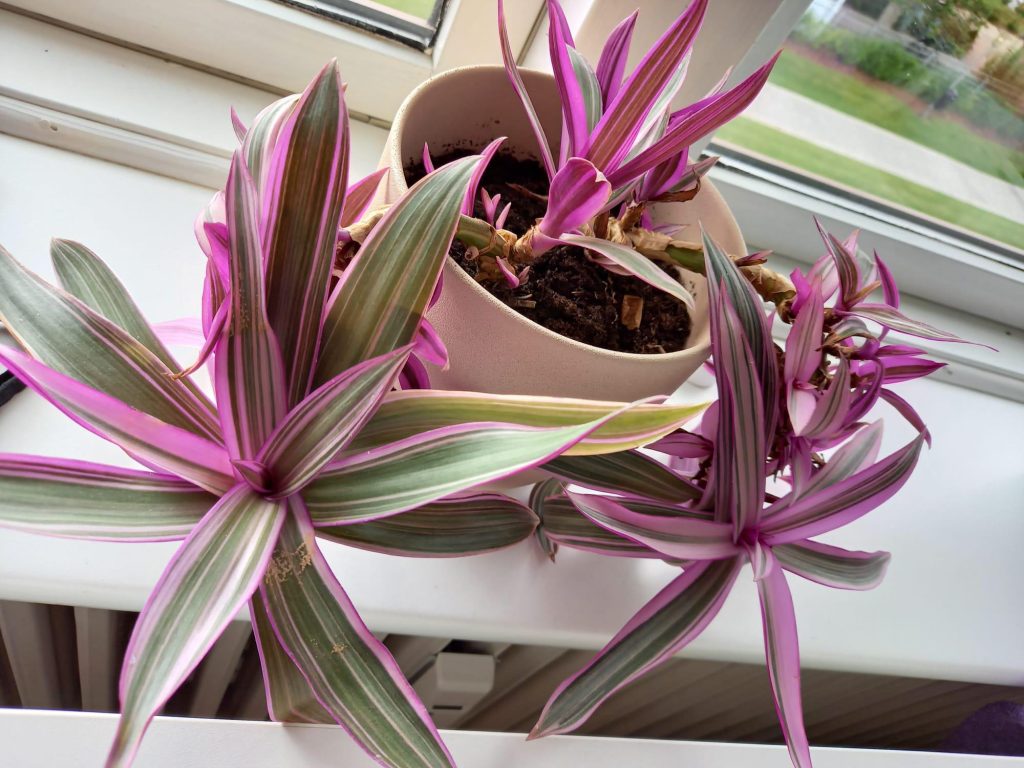
This popular houseplant is also referred to as the Purple Queen Spider plant. The Violet Spider plant is every inch beautiful. Their purple leaves are the splash of color your home needs to leave a drab state.
For foliage color, the Violet Spider plant is a mix of purple and green but with a purple back end.
They do not have the same trailing feature as other varieties. The plant’s vigor contributes to its attractiveness. In height, the Violet Spider Plant can grow up to 4 ft. while in width, they can grow up to 2 ft.
Although this eye-catching variety can be propagated as an outdoor houseplant, they are mostly grown as indoor plants due to their brilliant foliage appearance.
This variety should be placed in a location where it can enhance the beauty of that environment while in the same vein receiving sufficient growth requirements such as proper lighting, moderate and regular watering, appropriate temperature, and regular misting.
2. Green Spider Plant
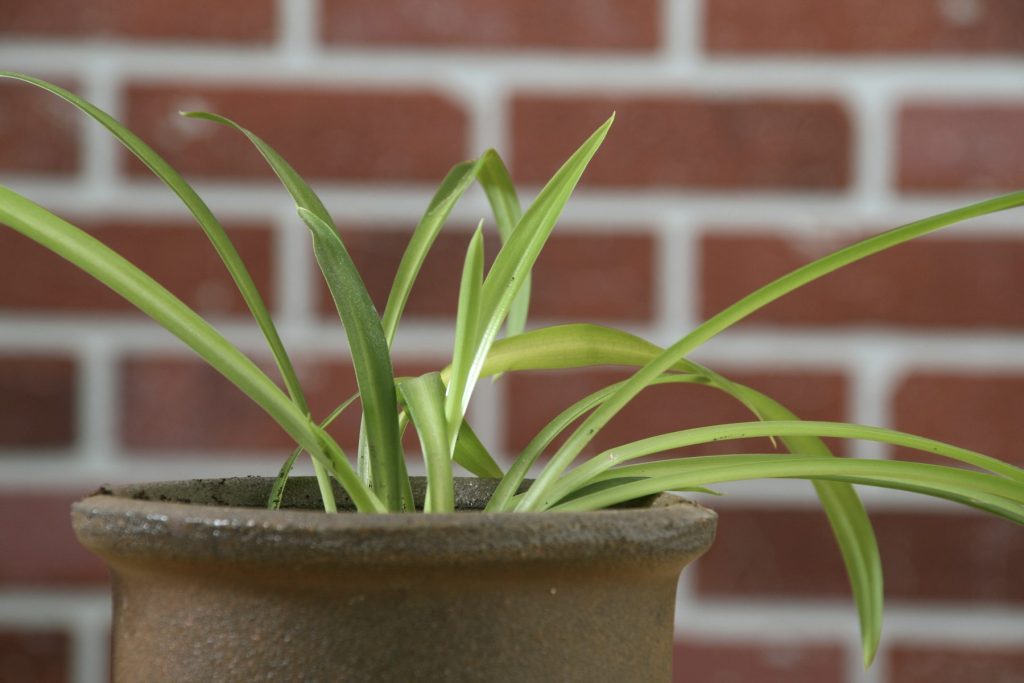
The Green Spider is a popular houseplant adored for its plain, thin, and narrow green leaves.
This variety is appreciated for its simple yet elegant appearance. They have their origin in South Africa. The Green Spider Plant can be propagated as an outdoor and indoor plant. Species propagated outdoors produce white star-like flowers which are attractive.
Due to their extravagant leaves which is an attractive feature, they are mostly grown on hanging shelves or dangle baskets, especially by interior decorators who chose them specifically to enhance the appearance of a home. When grown outdoors, they can be propagated in containers or nursery plants.
They are easy to propagate and to care for. Beginners should not find their Green Spider Plant propagation difficult so far they are familiar with the growth requirements of this variety.
All they require to survive is organic soil, regular and moderate watering, a well-drilled container, and an appropriate temperature. Growers must ensure that this plant is watered thoroughly to ensure even spread of nutrients from the soil to the roots.
3. Curly Spider Plant

This variety is considered one of the most striking Spider plant species. Due to the distinct feature of their tendril-like leaves, the Curly Spider plant accents the appearance of any environment they are grown in.
For foliage color and design, the Curly Spider plant has a dark and light green hue.
Their leaves are divided by hues of green; the darker shade is on each side of the leaf while the lighter shade is in the middle. This stunning houseplant is widely propagated because it can be positioned in any location in the home to brighten the environment with its cool color and attractive swirly leaves.
For an aesthetic effect, place them in a conspicuous location around the home. You can hang them on ceilings, hanging shelves, and dangle baskets. Ensure they are placed in locations where they compel onlookers with their appearance.
The Curly Spider can grow up to 8 inches in height. They thrive in temperatures between 60F°-70 °F. Ensure this variety is thoroughly watered to preserve and enhance their attractive and vibrant swirly leaves. Once their foliage appearance and color are affected, they tone down their aesthetic effect in that environment.
4. Golden Spider Plant
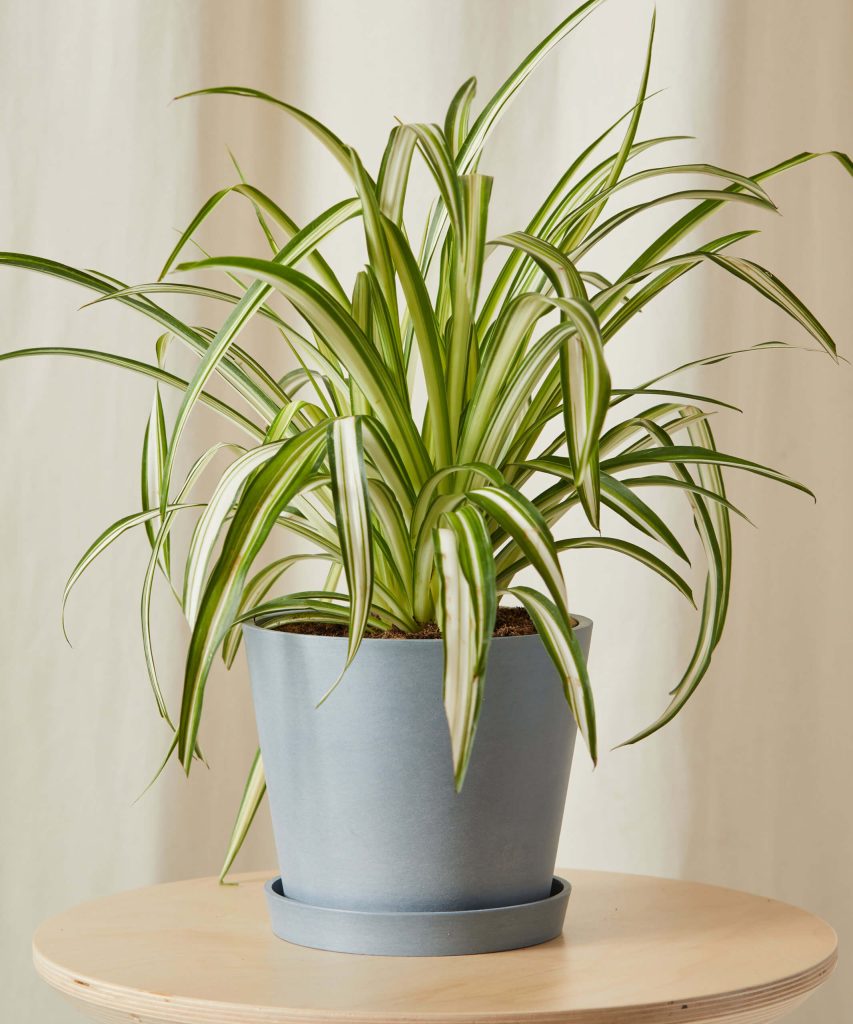
This variety is sometimes sold under the tag names “Kewada plant”, “Screw Palm”, and “Pandanus palm”. The Golden spider plant is distinguished by its brilliant foliage color. Their glossy leaves make them a popular option for houseplant growers.
Their bright foliage color makes them perfect for living rooms and bedrooms so far they complement the theme of the environment they are grown in.
The Golden Spider plant is most attractive when grown in an attractive container. This variety should be fertilized twice a month during their growing season. The Golden spider plant can grow up to 12 inches. When nurtured in perfect growing conditions, they tend to become more root-bound than other varieties.
This implies you may have them repotted regularly. Since this variety is popular, it can be purchased from supermarkets, nurseries, or online plant stories. Once delivered, growers are advised to abstain from fertilization till the plant adjusts to the temperature and humidity of the environment.
In addition, when choosing a pot, select one that matches the size of the plant. Using an undersized or oversized container can inhibit the plant’s growth.
5. Fire Flash Spider Plant
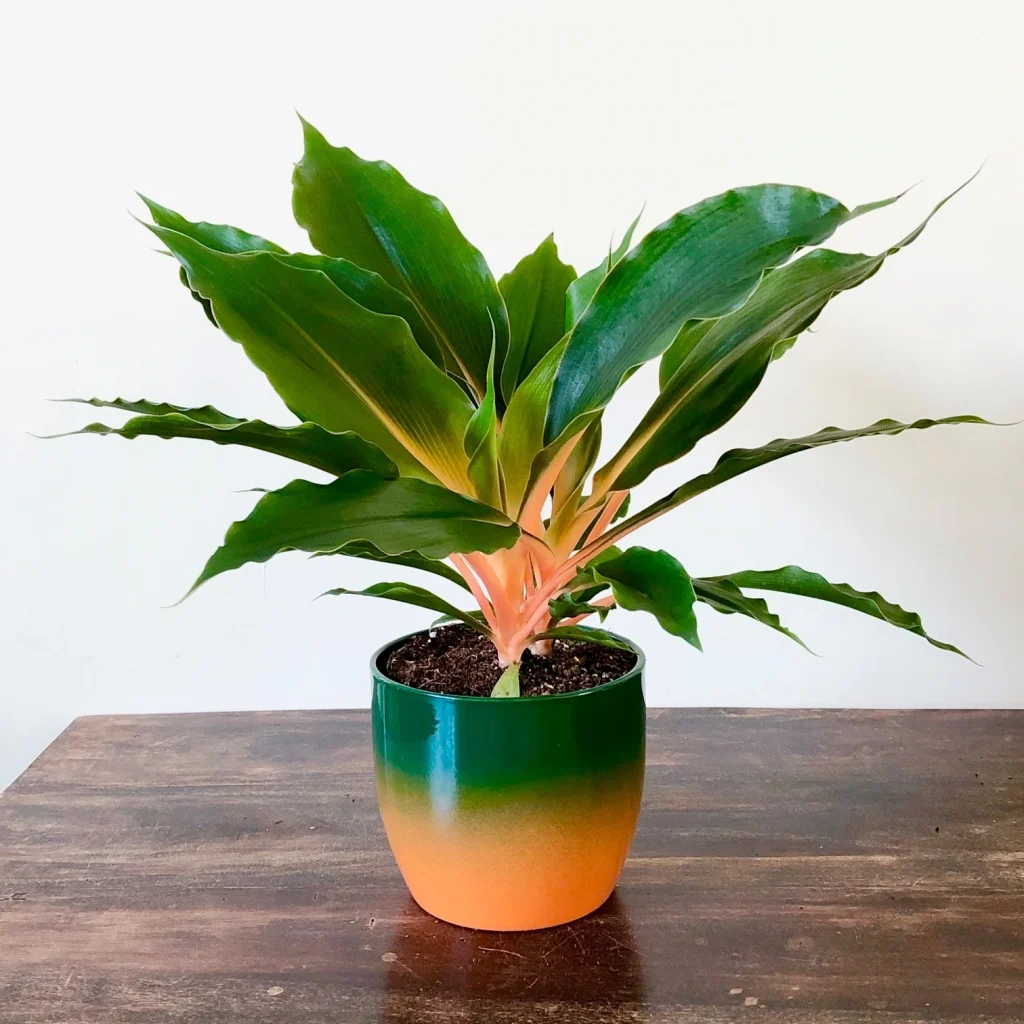
This distinct variety has an alluring feature of an orange plant base that has a fire-like semblance. Their leaves are wider but not as long as other varieties.
This stunning variety is one of the most attractive spider plant varieties to propagate. In addition, they are not quick to become root-bound like other species. They thrive in temperatures between 55 °F-50 °F. They can be propagated as indoor and outdoor houseplants.
However, they are widely propagated as indoor houseplants due to their attractive foliage appearance. Use an attractive container to pot them and watch your home dazzle in appearance. Ensure their leaves are sprayed regularly to improve their humidity.
They must not be grown in a poorly lit environment. Placing near windows should allow them sufficient lighting but if not, use artificial bulbs. Avoid using incandescent bulbs as they cannot provide the required level of light the plant needs to thrive.
Although they are drought tolerant. They should not be neglected for a long period. Propagate this variety alongside other varieties for a colorful effect in and around your home.
6. Reverse Spider Plant
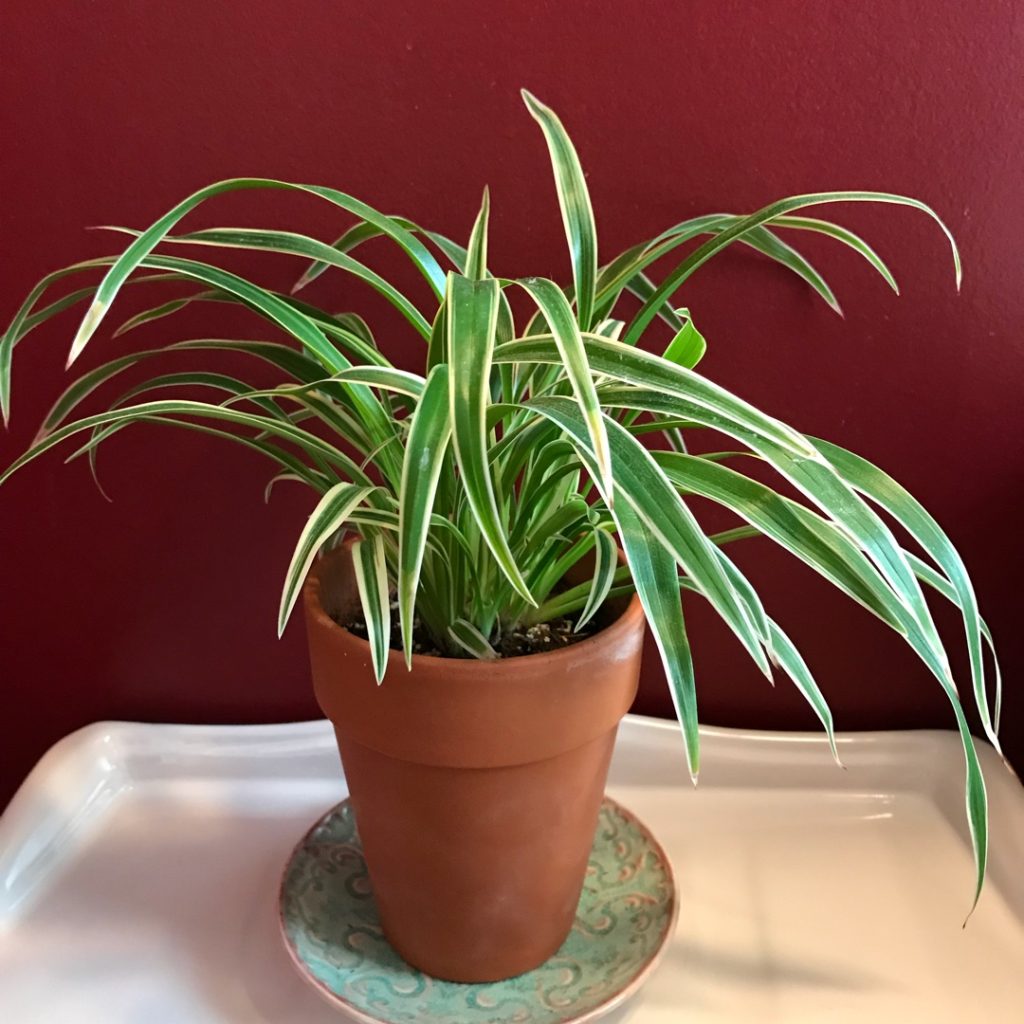
The Reverse Spider plant is another striking Spider variety. This variety got the name “Reverse spider plant” due to its irregular foliage color. Although they have an exact semblance to the Green Spider plant only that the lighter green shade is on either side of their leaves while the darker shade separates them.
For some plants, the light part is white rather than lemon green.
Like other varieties, they are not climbing plants but have trailing leaves. They are most times propagated by rooting their plantlets in organic soil; this propagation method is easy and appropriate for beginners as it does not require much experience as the division method requires.
This variety can grow up to 2 ft. in height and 3 ft. in width. This variety would thrive when propagated in organic soil. The amount of organic soil can be improved by adding manure from aged animals, peat moss, or mulches.
In the absence of these, use liquid-based fertilizers to improve the nutritional content of your Reverse spider plant soil. Once their trailing leaves have outgrown their pot size, ensure you have them repotted to avoid growth complications that may manifest through under-watering or insufficient lighting.
Final Note
Regardless of their variety, the Spider plant is a showy plant that would complement the theme of your home, especially when placed in strategic locations and attractive containers.
You can propagate more than one variety if your schedule allows you to. Any of these varieties are easy to propagate and to care for. We hope you have a stress-free propagation.
Discover more plant varieties:
- Mother of Thousands Plant Varieties: Common & Rare Types
- Spirea Varieties: 10 Common & Rare Types Of Spirea
- Cone flower Varieties: 9 Common And Rare Types Of Cone Flowers
- Begonia Varieties: 10 Common & Rare Types Of Begonia
- Tradescantia Varieties: 10 Common And Rare Types
- Dieffenbachia Varieties: 9 Rare And Common Types

